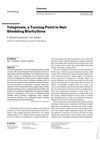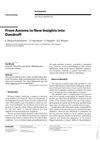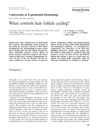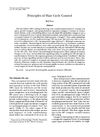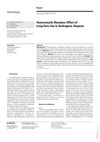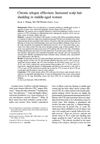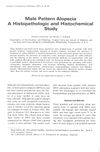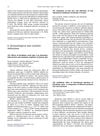The Hair Eclipse Phenomenon: Sharpening the Focus on the Hair Cycle Chronobiology
December 2003
in “
International Journal of Cosmetic Science
”
hair cycle chronobiology hair growth cycle hair shaft growth biological signals exogenous stimuli hair eclipse phenomenon hair shedding growth stage dysregulations early shedding delayed growth initiation stunted hair growth hair follicles alopecia microinflammation dandruff seborrhoeic dermatitis androgenic alopecia photoageing baldness local synchronizers growth factors mediators hair cycle hair growth cycle hair shaft growth hair shedding growth stage early shedding delayed growth initiation stunted hair growth hair follicles alopecia dandruff seborrhoeic dermatitis androgenic alopecia photoageing baldness growth factors
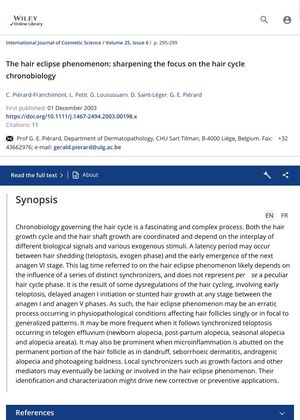
TLDR Hair growth and shedding are linked and can be disrupted, causing a delay known as the hair eclipse phenomenon, which is common in certain hair conditions and could lead to new treatments.
The 2003 study "The hair eclipse phenomenon: sharpening the focus on the hair cycle chronobiology" explored the complex process of chronobiology governing the hair cycle. The researchers found that both the hair growth cycle and the hair shaft growth are coordinated and depend on the interplay of different biological signals and various exogenous stimuli. They identified a latency period, referred to as the hair eclipse phenomenon, that may occur between hair shedding and the early emergence of the next growth stage. This phenomenon is not a distinct hair cycle phase, but rather the result of dysregulations of the hair cycling, involving early shedding, delayed growth initiation, or stunted hair growth at any stage. The hair eclipse phenomenon may occur in conditions affecting hair follicles singly or in patterns, and may be more frequent following synchronized shedding occurring in various types of alopecia. It may also be prominent when microinflammation is present in the hair follicle as in dandruff, seborrhoeic dermatitis, androgenic alopecia, and photoageing baldness. The researchers suggested that the identification and characterization of local synchronizers such as growth factors and other mediators involved in the hair eclipse phenomenon might drive new corrective or preventive applications.

